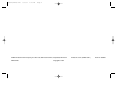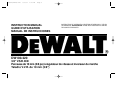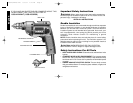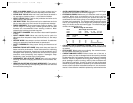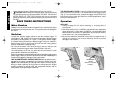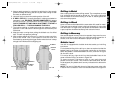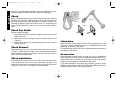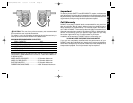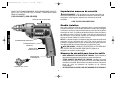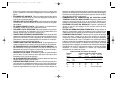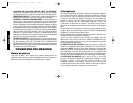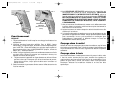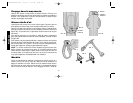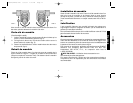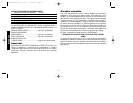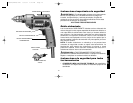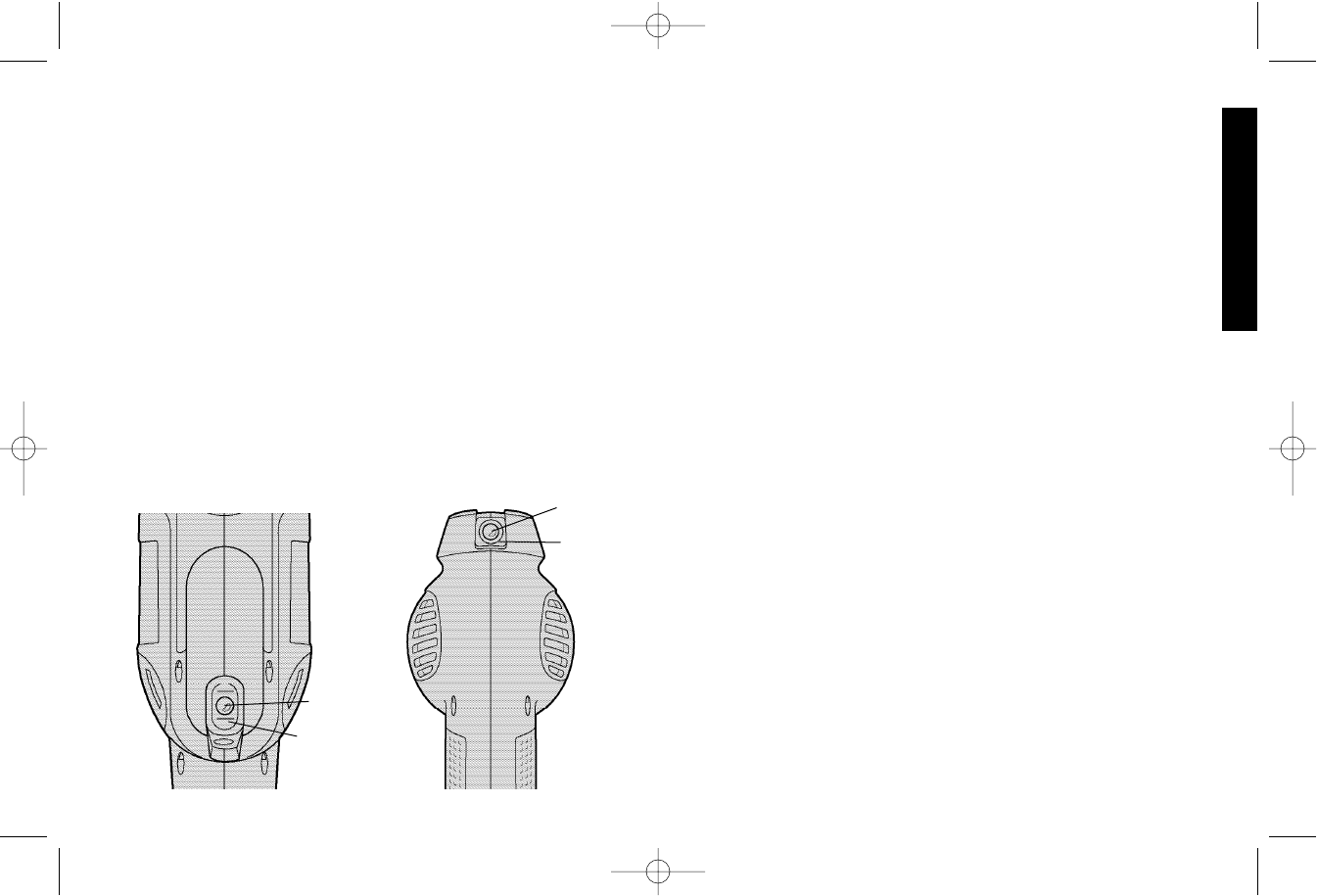
4. Always apply pressure in a straight line with the bit. Use enough
pressure to keep drill biting, but do not push hard enough to stall
the motor or deflect the bit.
5. Hold tool firmly to control the twisting action of the drill.
6. IF DRILL STALLS, it is usually because it is being overloaded or
improperly used. RELEASE TRIGGER IMMEDIATELY, remove
drill bit from work, and determine cause of stalling. DO NOT
CLICK TRIGGER OFF AND ON IN AN ATTEMPT TO START A
STALLED DRILL — THIS CAN DAMAGE THE DRILL.
7. To minimize stalling or breaking through the material, reduce
pressure on drill and ease the bit through the last fractional part
of the hole.
8. Keep the motor running when pulling the bit back out of a drilled
hole. This will help prevent jamming.
9. With variable speed drills there is no need to center punch the
point to be drilled. Use a slow speed to start the hole and
accelerate by squeezing the trigger harder when the hole is deep
enough to drill without the bit skipping out.
Drilling in Metal
Use a cutting lubricant when drilling metals. The exceptions are cast
iron and brass which should be drilled dry. The cutting lubricants
that work best are sulfurized cutting oil or lard oil; bacon-grease will
also serve the purpose.
Drilling in Wood
Holes in wood can be made with the same twist drills used for metal.
These bits may overheat unless pulled out frequently to clear chips
from the flutes. For larger holes, use power drill wood bits. Work that
is apt to splinter should be backed up with a block of wood.
Drilling in Masonry
Use carbide tipped masonry bits at low speeds. Keep even force on
the drill but not so much that you crack the brittle materials. A
smooth, even flow of dust indicates the proper drilling rate.
Bubble Level
Your drill is equipped with a bubble level that assists you in drilling
level holes.
For horizontal drilling, tilt the drill up or down as required so that the
bubble floats in the center of the parallel lines drawn on the glass.
When the bubble is centered between the lines, as shown in Figure
3A, the drill is level.
For vertical drilling, align the drill so that the bubble floats in the
center of the bull’s-eye, as shown in Figure 3B.
To assure accuracy, first place a level on your work piece and
position it so that it is level. Then, when the drill reads level, the two
will be aligned. (Any bubble level can only indicate level to the earth’s
surface.)
NOTE: The level is filled with mineral oil that may cause minor skin
irritation when contacted. If the level breaks and this fluid gets on
3
English
FIG. 3A
FIG. 3B
BUBBLE
BUBBLE
LEVEL
BUBBLE
BUBBLE
LEVEL
383945/DW100-220 5/3/02 1:15 PM Page 3



